Monocle Scotland Survey / Global
The Monocle Guide to Scotland
Our Scotland survey goes beyond the nation’s world-famous scenery to visit some of the makers, creators and company owners who make it such a dynamic 21st-century destination. Read on for a wee sample of what this great country has to offer.




Lay of the land
Plan of action
3 marks the stop


Monocle has taken great pleasure in casting our net across hills and lochs, down city streets and on to sandy coves to find the delights that fill this guide. Remember, getting around will take you longer than you think because there’s so much to see. But here are the spots not to miss.
Craft & Design
Finding form
Object lessons
A newly revived respect for indigenous art and craftwork is sweeping Scotland, as evidenced everywhere from city-centre studios to remote coastal workshops. These makers are tapping into the country’s proud heritage.
Bard
Edinburgh

Overlooking the Water of Leith, Bard celebrates a comprehensive array of Scottish craft and design – without a single piper-adorned shortbread tin in sight. Based in Scotland’s oldest former customs house, business (and life) partners Hugo Macdonald and James Stevens exhibit and sell their discoveries, including Orkney chairs, alongside traditional woven willow baskets for carrying broody hens – by the Isle of Eigg’s All About Willow makers – and a pepper mill made of peppercorns and resin from Loch Lomond-based Marc Sweeney.
“In rural economies, craft is a way of living born through necessity,” says Macdonald, who is originally from the Isle of Skye. “We work with people who have an extraordinary ability to manipulate materials out of need.” Bard is at once a shop, a gallery and a conversation starter. Whether it’s hosting talks or simply welcoming visitors and telling the stories behind the objects, all aspects are integral to Bard.

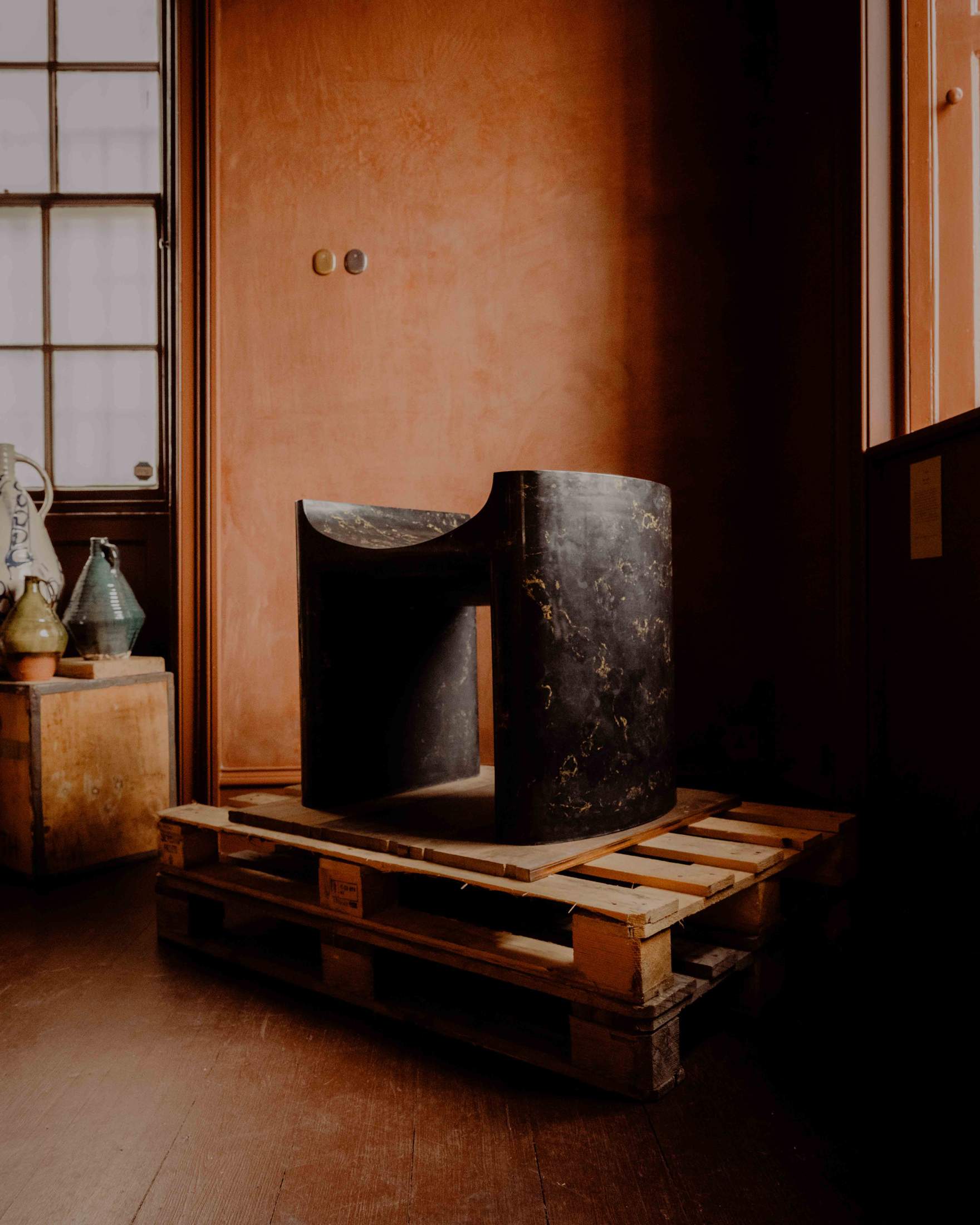
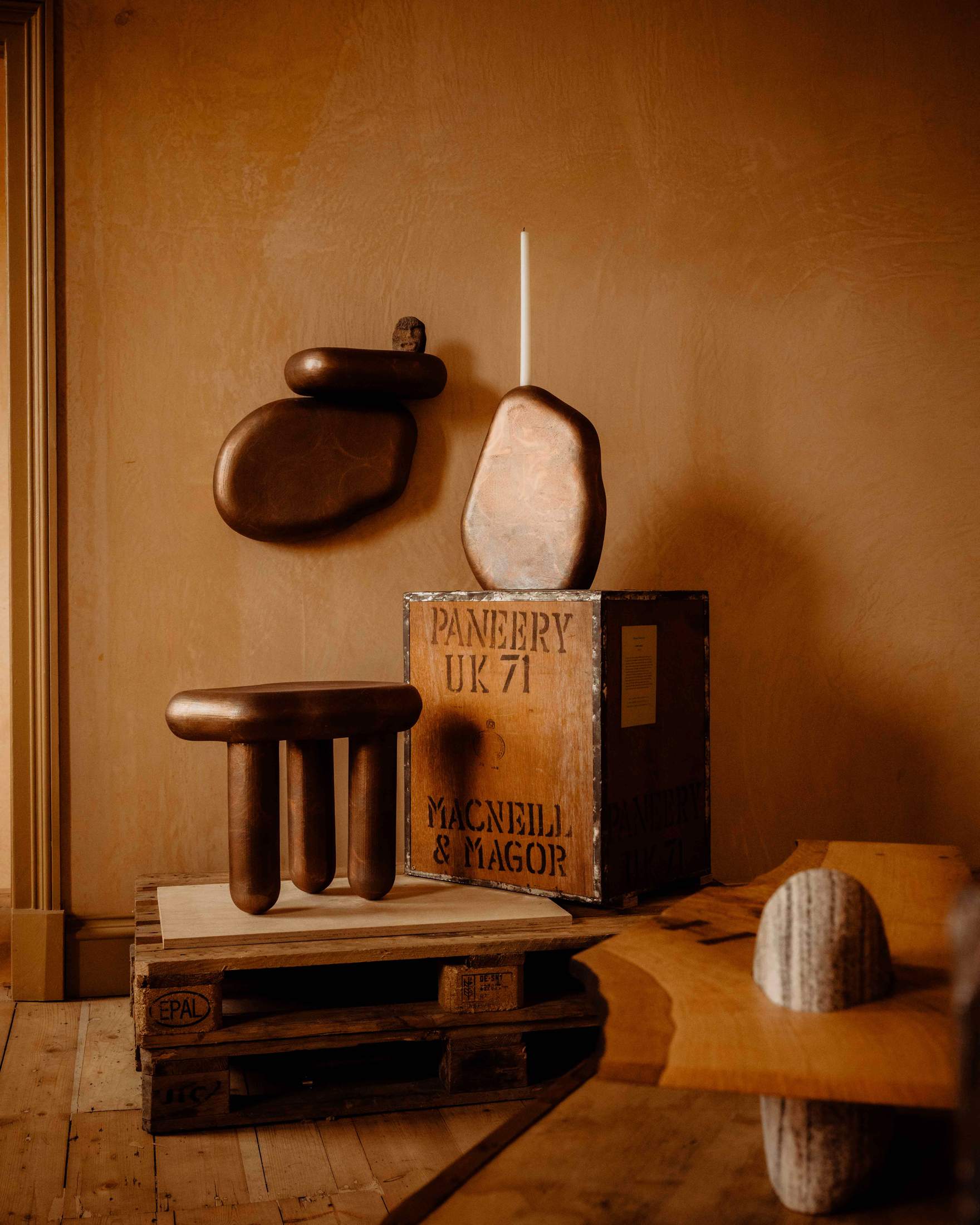
The Scottish diaspora in the US, Canada and Australia is a particularly important demographic for Macdonald and Stevens but those still resident in the country, and design enthusiasts of all ages, also seek out the brand. “There’s an understanding that it is worth investing in design that will last and has a cultural specificity, is made in a particular region and has a sense of heritage,” says Stevens.
bard-scotland.com
More craftiness
Wild Gorse Pottery
Glasgow
Ceramicist Jen Smith’s working studio and shop sells stoneware for the home and table. Specialising in traditional techniques, Smith’s style is influenced by walks along Scotland’s beaches foraging for seaweed and lichen. Feeling inspired? Wild Gorse also offers courses in ceramics.
wildgorsepottery.com
Dumfries House
Cumnock, Ayrshire
Dumfries House, dating to the 18th century, is set in a sprawling parcel of East Ayrshire countryside. An example of stately Scottish architecture of a bygone era, the estate today hosts educational programmes tutoring skills that range from traditional crafts to horticulture.
dumfries-house.org.uk
Woven in the Bone
Buckie, Moray Firth
An inheritor of her native land’s proud weaving tradition, designer Sam Goates has become a valued supplier of Scottish textiles worldwide. Using a semi-automated foot-treadle loom known as the Hattersley Domestic, Goates makes artisanal cloths in Scotland’s trademark mix of pattern and colour.
woveninthebone.com
Studio Vans
Outer Hebrides
Studio Vans transforms ordinary vehicles into campervans that are built by a beach in the Hebrides. The firm collaborates with creators to craft the perfect mobile home, complete with underfloor heating, linen, prints, ceramics, camping gear and more.
studiovans.com
Bothy Project
Isle of Eigg
Inspired by the huts (known as bothies) that dot the vast Scottish wilderness to shelter travellers and wanderers, the Bothy Project provides creative residencies in small-scale, off-grid spaces. Aimed at artists, writers, musicians, researchers and residents, the project first began with a hut by the River Spey and now operates from Eigg.
bothyproject.com
Cara Guthrie Ceramics
Perthshire

“There’s a lot of wonderful work in Scotland at the moment,” says Perthshire-based ceramicist Cara Guthrie of the country’s long-lived but blossoming craft scene. “That feeling of being connected and supportive gives people momentum.”
Having trained in Denmark – making minimalist, practical artefacts at Kasper Würtz – and then with artist William Plumptre in England’s Lake District, Guthrie successfully fuses the functional and sculptural in her own practice.
Under a moodboard featuring Karl Blossfeldt’s botanical photography, folk-horror film stills and the watchful gaze of childhood heroine Mary, Queen of Scots (“I used to write letters to her – pretty weird, right?”), Guthrie turns her wheel for a wide array of projects. “I call myself a potter and then everyone’s happy as it’s quite understated,” she says. “I mean, it’s like a job from a nursery rhyme, isn’t it?” But Guthrie’s pottery? It’s poetry.
caraguthrieceramics.com


Food & Hospitality
Lochs and keys
Welcome boos
There’s never been any doubting the lure of the jaw-dropping and diverse natural landscape of Scotland, but now the country has a range of accommodation options to match, not to mention a host of splendid spots to sate any weary explorer’s appetite.
Edinbane Lodge
Isle of Skye



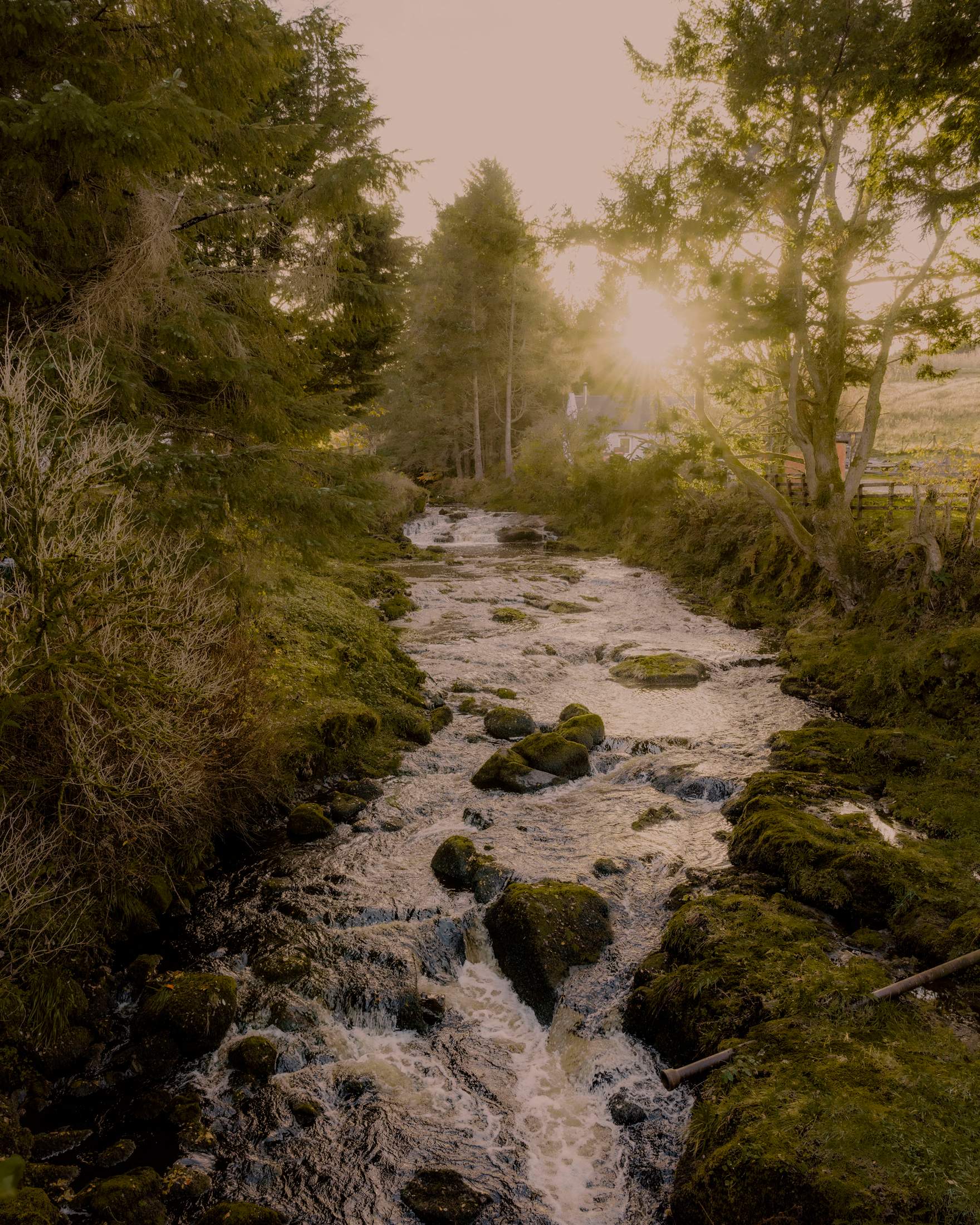
On the north of Skye, a stroll inland from the bays that provide much of its seafood, and surrounded by the fields from which much of its meat, vegetables and wild produce originates, sits Edinbane Lodge. “I’m from Skye, the food is from Skye and as much as can possibly come from a minute down the road the better,” says chef-proprietor Calum Montgomery. “Our scallops with seaweed butter sauce is a classic and I can pretty much see from here where every bit of that dish comes from.”
Edinbane’s food is fine-dining “but grounded in the age-old ingredients of necessity: scallops, shrimps, monkfish, venison,” says Montgomery.
edinbanelodge.com
Northern bites
Loch Bay
Isle of Skye
Situated in a bay on the remote northwestern coast of Skye, Loch Bay serves a fuss-free menu by Michael Smith that has earned the restaurant a Michelin star.
lochbay-restaurant.co.uk
Timberyard
Edinburgh
The family team behind much-loved Michelin-starred Timberyard like to let the seasonal produce speak for itself. A second location, the Montrose wine bar, is now open.
timberyard.co
Gloriosa
Glasgow
Rosie Healey reinvents Mediterranean food in a smart, minimal setting where seasonal dishes balance zesty flavours with flair and a lack of pretension.
gloriosaglasgow.com
Fish Shop
Ballater, Aberdeenshire
Scotland-loving gallery Hauser & Wirth continues its foray into hospitality with the simple but delicious Fish Shop, a community fishmonger and restaurant.
fishshopballater.co.uk
Inver
Strachur, Argyll & Bute
On the shores of Loch Fyne, Inver is dishing up Scotland’s answer to New Nordic cuisine but in a heartier, perhaps less prim manner. Tempted to stay the night? Book yourself a bothy.
inverrestaurant.co.uk
The Gannet
Glasgow
The Gannet offers a modern take on fine Scottish dining, working closely with nearby artisan producers, foragers and farmers. Expect much more than run-of-the-mill haute cuisine.
thegannetgla.com
East Pier Smokehouse
St Monans, Fife
In a blue building in the fishing village of St Monans, James Robb serves exquisite wood- fired smoked langoustines, lobster and sea bass with chips. Summer only.
eastpier.co.uk
The Free Company
Balerno

The Free Company is snuck into the Pentland Hills, a short drive from central Edinburgh, and has gained a formidable reputation for its cosy premises, cordial welcome and hearty food.
Once you make your way through the winding country lanes leading to this popular farm-cum-restaurant, you’ll see a glimmer of light coming from the roaring fire in the yard, and a pair of friendly faces. Owners and brothers Charlie and Angus Buchanan-Smith, who started The Free Company in late 2016 with friends Stella Stewart and Jack Fletcher, make a point of personally greeting their dinner guests at the restaurant’s entrance before directing them to the ground-floor bar, which serves organic wines, regional beers and perfectly mixed cocktails.
“We don’t need to use anything from outside to feed the animals and we’re doing it all with zero chemicals”


The brothers are setting the tone for an evening where strangers quickly turn into friends, drinks are enjoyed around the fire, and excellent food – made using homegrown ingredients – is passed around the long, communal tables of the adjoining old milking byre. The six-course menu is ever-changing but some highlights from its recent winter series include house pickles, beef-fat beetroot and aged Shetland hogget. Trays of homemade sourdough bread and the restaurant’s much-loved whipped honey butter are always at the ready.
Amid all the merriment there’s also an opportunity to learn about the regenerative farming practised by the brothers. “It’s an entirely circular system – we don’t need to use anything from outside to feed the animals and we’re doing it all with zero chemicals,” says Charlie, who works on the farm during the day and has been passionately researching the topic for years. “It’s about a return to tradition.”
the-free-company.com
Northern nights
Boath House
Nairn
On the northern coast, near the bay of Findhorn, this majestic Georgian house has 10 rooms and a four-bedroom lodge, a walled garden café and an artistic residency programme that has turned it into a magnet for musicians, artists and designers.
boath-house.com
Blue Cabin By The Sea
Cove, Scottish Borders
An hour’s drive from Edinburgh and a walk through a secret rocky tunnel, Blue Cabin By The Sea offers picture-perfect views. Its cosy interiors were designed by the owners, architect Ben Tindall and sculptor Jill Watson.
bluecabinbythesea.co.uk
Glen Dye
Banchory, Aberdeenshire
This series of cabins and cottages sits on a private estate on the banks of River Dye. Book an overnight stay and enjoy a day in the wilderness, or just rest in the property’s wood-fired sauna.
glendyecabinsandcottages.com
Shore Cottage
Cairndow, Argyll
On the shores of Loch Fyne, this homely cottage offers views over the water to the ancient town and castle of Inveraray. Spot seals from the garden or read a book by the living-room fireplace.
shore-cottage.com
Guardswell Farm
Perthshire
This 60-hectare grassland farm between the villages of Abernyte and Kinnaird is a true family affair, with three generations of the Lamottes involved. You can enjoy the property’s wonders, including views of the River Tay, by booking into the country home or visiting the nearby café.
guardswell.co.uk
Aldourie Castle
Inverness
This 300-year-old castle on the banks of Loch Ness has been converted into an elegant home with 16 bedrooms, a boathouse and 200 hectares of gardens and woodlands. It’s an ideal base from which to explore the Highlands.
aldourie.scot
Kilmartin Castle
Argyll
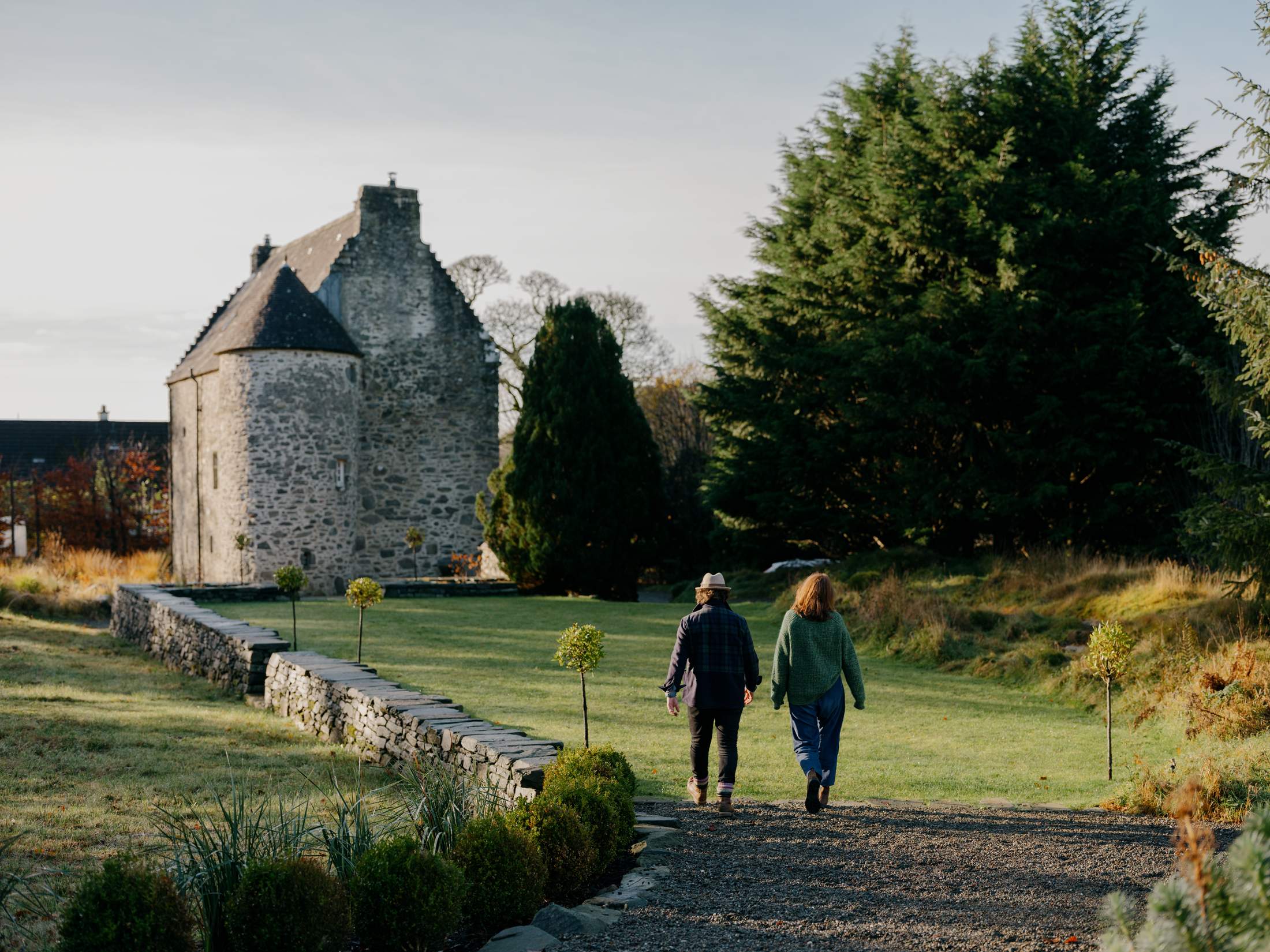
In a charming corner of Argyll – a two-hour journey from Glasgow, along the idyllic Loch Lomond and surrounding Highland area – is one of Western Scotland’s hidden gems. This is far from a tourist hotspot but it has plenty to offer, including Kilmartin Museum – which displays archaeological finds from across Kilmartin Glen – artists’ studios and a cosy village pub. It was enough to lure former creative director Simon Hunt and radio presenter Stef Burgon to buy Kilmartin Castle and leave their corporate lives behind them.
After years spent renovating the castle and driving around Europe handpicking antiques for the venue’s lounge, dining rooms and five spacious bedrooms, the couple have transformed Kilmartin Castle into a uniquely memorable hospitality experience. Part of their successful formula lies in the ability to remix the history and grandeur associated with the castle – built during the reign of Mary, Queen of Scots – with a contemporary sensibility.
You’d be right to assume that sleeping inside a 16th-century castle would be as eerie as it is majestic, but heated floors, fast wi-fi and a sprinkling of witty design objects create a warm space where groups of friends get together to enjoy whisky by the fire, eat like kings and queens in the baronial dining room, and take a dip in the natural pool in the grounds.



“We wanted everything to feel like an experience,” says Hunt, whose aim was to evoke a lived-in, cottage feel. “It’s like a great hip-hop track that mixes old funk with soul and disco – you can clearly hear the old sounds but you add some new electronic beats in the mix too. We made sure there are enough luxurious touchpoints to offset the rustic feel,” he adds, pointing to the old barn featuring the same type of Chadder & Co lavatories that service the bathrooms of Buckingham Palace.
Hunt and Burgon’s discerning approach to design means that there’s something to discover in every corner of the castle. You’ll end your stay feeling sufficiently inspired to rethink your own spaces – and also to spend more time in Western Scotland.
kilmartincastle.com
The Taybank
Dunkeld
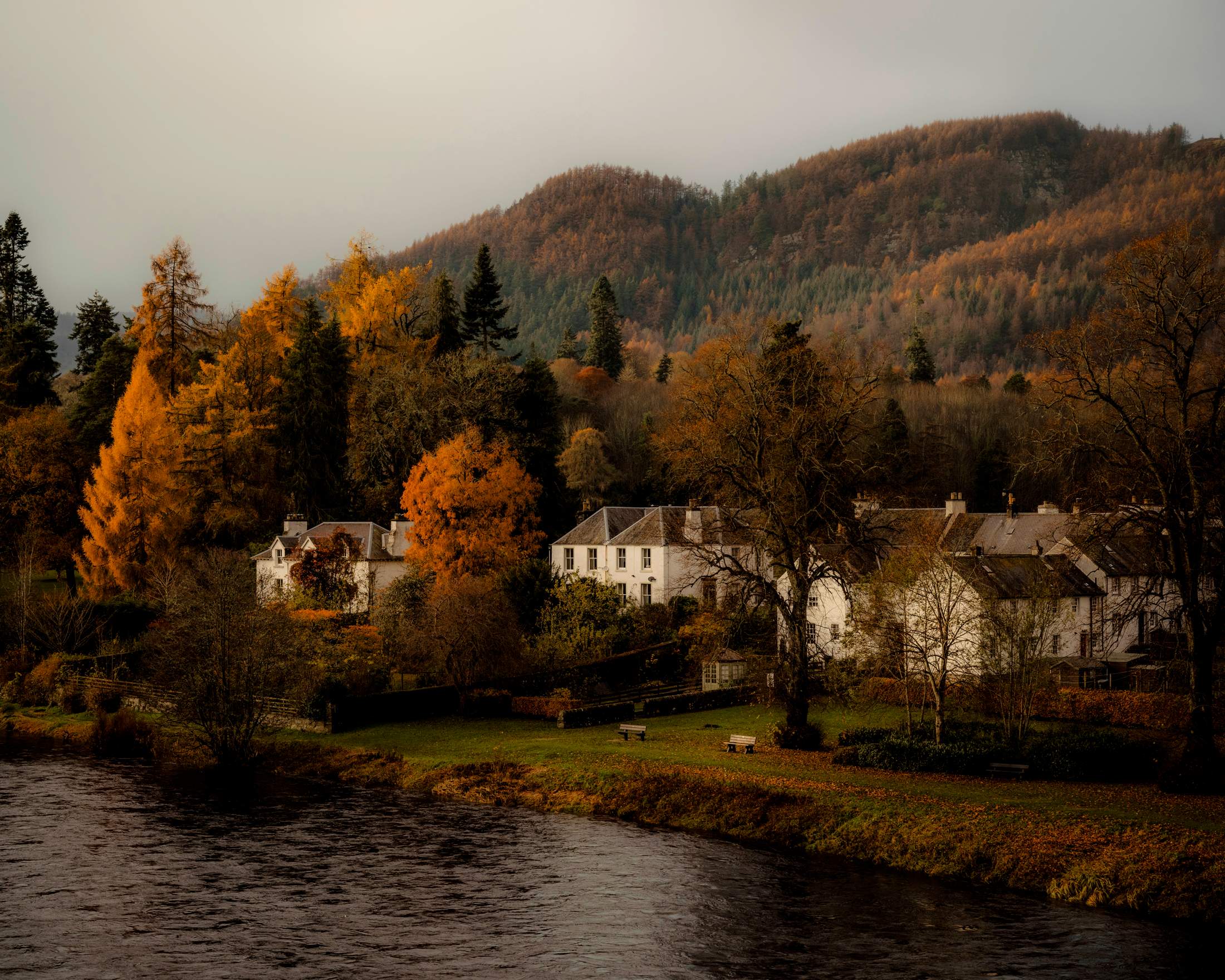
Just as a Dutch painter might have magicked a windmill on a dyke for the sake of perspective, the town of Dunkeld, placed picturesquely on the fast and fecund River Tay, appears too good to be true. Eighteenth-century townhouses bow to the river as garden plots crowd its bank; there’s a yew-crowded cathedral that can be reached through small streets of cosy cottages; while butchers, bakers and wine merchants throng Bridge Street, named after the town’s Thomas Telford-designed seven-arch centrepiece. “And don’t forget Kettles, which sells everything from fuses to plungers to children’s birthday cake candles,” says Fraser Potter, proprietor of The Taybank hotel, conjuring up the town’s hardware store to reel us in from our reverie. “That’s where the magic happens that makes the magic happen.”
Potter is right. There is postcard Dunkeld and then there is making that picture possible. Potter himself, his partner Kimberly, a freelace creative director and writer, and Potter’s charming team seem like exemplars of much of the town’s most visible recent success. The Taybank, the hotel that Potter took over five years ago as a staff-training base for his former events company, has added layers of feasts, events nights, pop-ups and seasonal specials. It has also become a focal point for anyone driving over the bridge with an eye on a memorable evening, a stunning supper and a restorative bed for the night.



The Taybank’s open-air cinema is a summer blockbuster in itself, while the long trestle-table dinners under yawning canvas are a social whirl, the riverside pizza oven a hit and the sauna – which is open to everyone – a fully stacked-out winter warmer and riverside hub.
Inside, The Taybank’s rooms are at the cosy end of contemporary cool, while the dining spaces are elegantly simple showcases for head-chef Gemma Dallyn’s wonderful food – a sort of hyperlocal, hearty deluxe. Every Thursday, the bar becomes a sweet-stringed jam session venue for musicians’ guitars, fiddles, bodhrans and pipes, where the business and busy-ness of a successful local enterprise are consecrated by the stirring sounds of its tradition. “You never know who’s going to turn up,” says Potter of the musicians, who range from old hands to teenagers. “It’s a bit of magic, really.” He could be speaking for them, his guests or indeed any old visitor to Dunkeld.
thetaybank.co.uk
Landscape
Over the hills and far away
True north
The Escapist invites you to explore the wealth and warmth of Scotland, with enough top-class diversions to whet your appetite and set you on your merry way to further discover this unique place in which to wander and wonder.


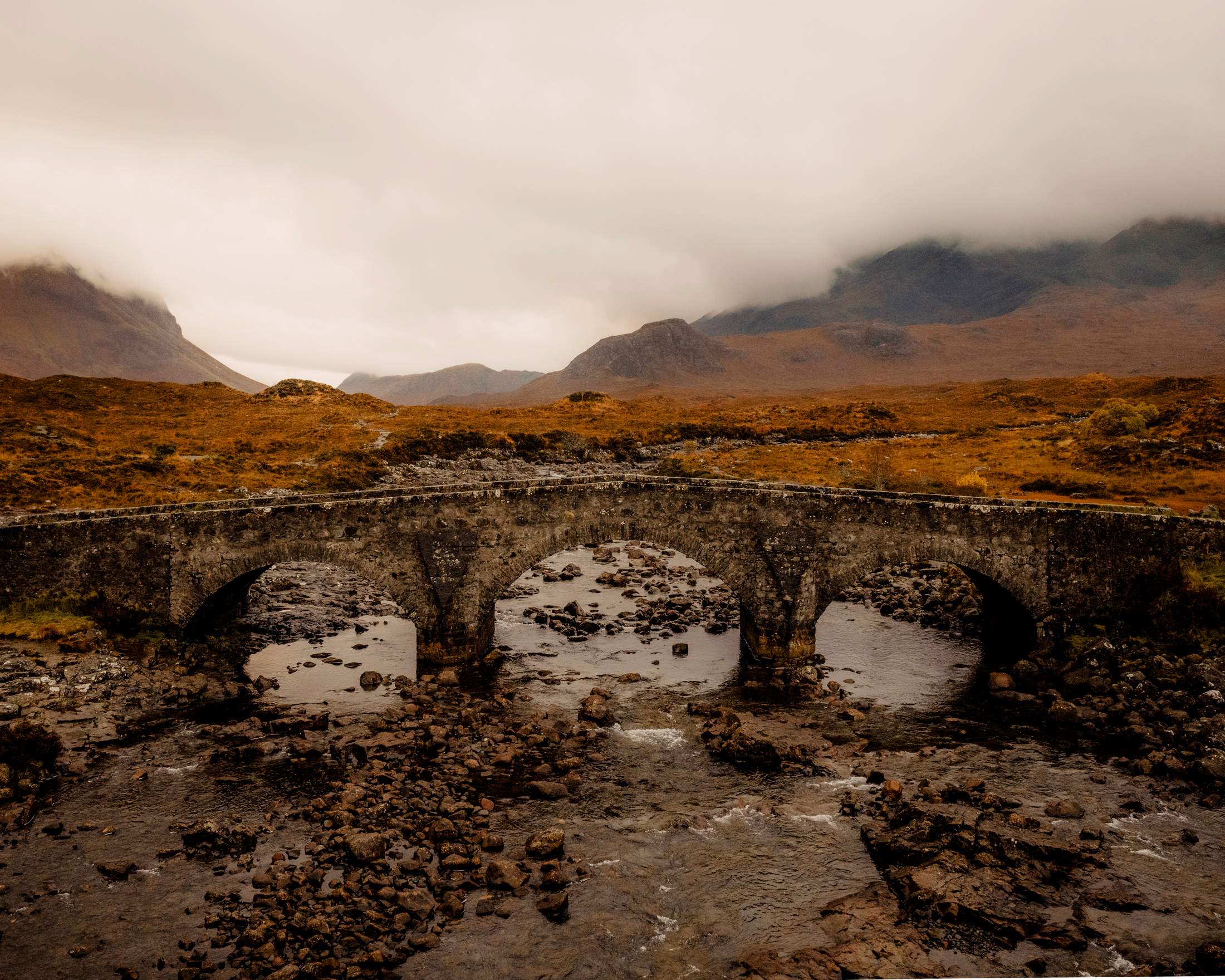

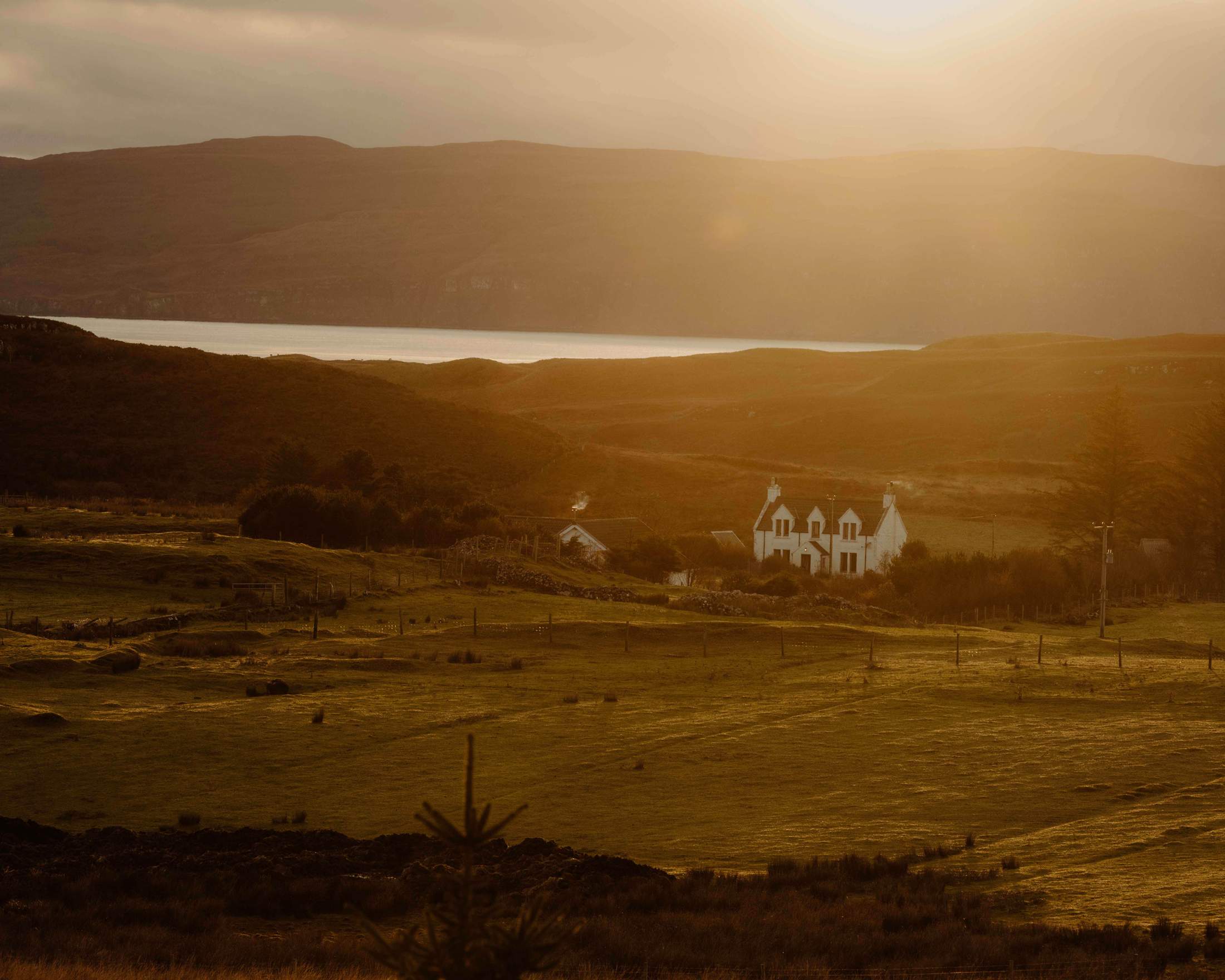

Fashion
National fabric
Cutting it fine
This is a land that values the artisanal expertise of its traditional knitters and weavers as much as it does the trendsetting mindset of its most contemporary fashion designers. Our pick of stylish outfitters exemplifies that connection.
La Fetiche
Glasgow

After years spent working for French fashion house Sonia Rykiel in Paris, April Crichton and Orély Forestier joined forces seven years ago to create their own specialist knitwear brand, La Fetiche. Their operation, based between Glasgow – where Crichton now lives – and Paris, has an independent spirit, having established close-knit partnerships with some of the best weavers in Scotland. This ensured that La Fetiche quickly stood out from mainstream competitors.
The bold colours and graphic intarsias on the brand’s Shetland-wool jumpers are a contemporary take on traditional Fair Isle patterns. “The vision was to champion Scottish craft but at the same time create designs that feel relevant and exciting for today,” says Crichton. “I was always interested in working with a Scottish factory – the Rolls-Royce of knitting.”
After moving to Glasgow, Crichton began forging partnerships with anumber of Scottish artisans, including a small firm in Rothes that specialises in spinning lambswool, and a group of traditional Fair Isle weavers near Aberdeen that has been operating in the area since the 1920s.


“It all came from a heartfelt desire to celebrate these fantastic makers,” says Crichton. “There’s a historical connection and a sentimentality with knitwear and Scotland – it’s like whisky. The softness of the water here just gives the wool a special touch that really can’t be recreated anywhere else.”
Apart from its rich manufacturing heritage, Scotland has influenced La Fetiche’s irreverent spirit in other ways. Crichton is always looking at her hometown’s brutalist architecture for inspiration, as well as its vibrant vintage boutiques, art galleries and surrounding nature. “Being in Scotland you can control your relationship with fashion,” she says. “It’s always been the place I return to, to start a collection and think about new ideas.”
lafetiche.com
Halley Stevensons
Dundee

For the past 160 years, Halley Stevensons has been known for producing some of the world’s best waxed cotton fabrics from its Dundee factory. The business also boasts sustainable “performance” fabrics produced on machines built in-house – but this sharp focus has also helped set the company apart and attracted long-term collaborators.
“Our success is testament to our partnerships,” says Dorothy Arnott, the firm’s marketing and sales manager, explaining how the tight group of 50 skilled employees maintains an ongoing dialogue with its associates. Case in point: the company worked with outdoor brand Patagonia to develop a new type of wax that is 100 per cent plant-based and biodegradable. “We see a future in the sustainable development space,” says Arnott. “These are new finishes but they perform just as well.”
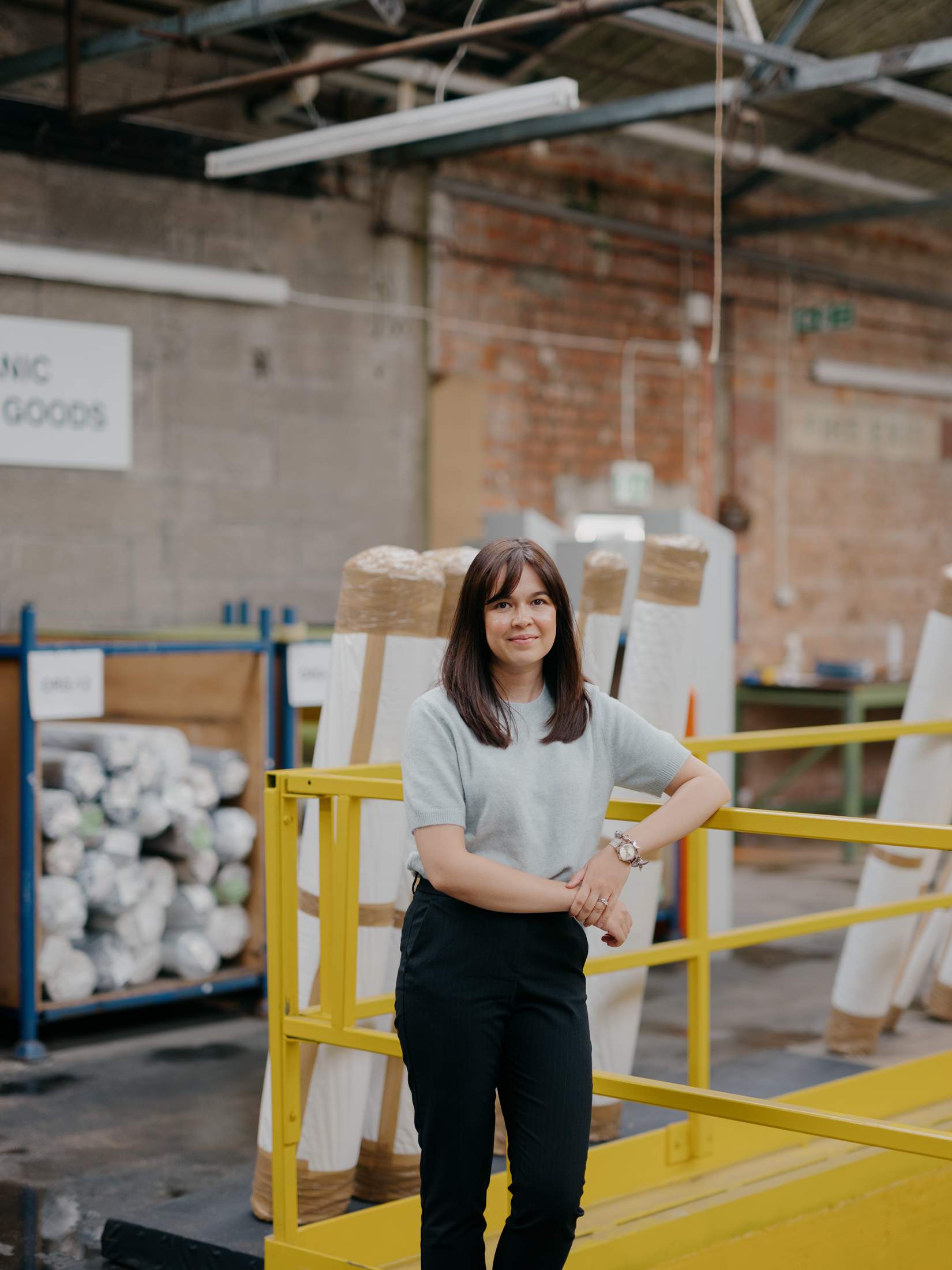

With a ban on fluorocarbons being implemented soon, manufacturers such as Halley Stevensons are well-positioned to lead the sector. Its client orders are increasing and the business has been growing its revenue by 20 per cent every year since 2015.
An increased appreciation for brand Scotland has given the business a further boost – and confidence for its future. “Our heritage underpins everything we do,” says Arnott. “But our real lifeblood is innovation. We want to be a hub where brands come to find new, creative solutions.”
halleystevensons.co.uk
Where to dress the part
Kestin
Edinburgh
Kestin Hare aims to create “the most solid offer” of everyday clothing for men. He has certainly succeeded with his sharp workwear and Scottish knits, all on display at his elegant shop.
kestin.co
Campbell’s of Beauly
Beauly, Inverness
Since 1858, Campbell’s has specialised in sporting tweeds and Highland dress. Its busy workshop offers handcrafted tailoring, knitwear and shirting.
campbellsofbeauly.com
Finnieston
Glasgow
At Ross Geddes’ two Finnieston shops, you can find menswear that draws inspiration from Glasgow’s industrial heritage with an emphasis on high quality.
finniestonclothing.com
Barrie
Hawick
As one of Scotland’s oldest cashmere manufacturers, Barrie offers some of the finest knitwear in the world, designed with a contemporary spin by creative director Augustin Dol-Maillot.
barrie.com
Shetland Woollen Co
Shetland
This employee-owned business is one of the last operating knitwear factories in the area. Its skilled team designs elegant knits made of natural Scottish wool and sold in its charming Hoswick boutique.
shetlandwoollen.co
Bute Fabrics
Isle of Bute
Bute Fabrics was founded after the Second World War to offer employment to service people returning home. Since then, it has provided durable wool fabrics to clients worldwide.
butefabricsltd.com
Ardalanish
Isle of Mull
At the Ardalanish farm, fleece from sheep is transferred to a nearby weaving mill and turned into cosy woollen jumpers, shawls and plaids. Buy them all at the farm.
ardalanish.com
Scottish Originals
World leaders
Customs made
We meet two independent, innovative businesses succeeding thanks to their characteristically Scottish penchant for doing things their own way, plus we look at a handful of concepts that are unique to the country, from unmissable events to etiquette.
Blackthorn Salt
Ayr

As you approach Ayr’s seafront, with its breathtaking views of the sea and the Arran mountains, you’ll catch sight of an imposing wedge-shaped tower covered in thorns. This is where Gregorie and Whirly Marshall manufacture Blackthorn Salt, the artisanal product they launched in 2020 after years of running their family’s salt-importing business and visiting producers around the world. “We wanted to make a salt we’re proud of, using methods that work for this climate,” says Whirly from the Blackthorn carriage, which rests on dormant tracks next to the tower to host salt tastings for visitors.
The use of these “graduation towers” to produce salt dates to the sixth century.
When Gregorie, an architect, saw the structures in Poland and Germany (now operating as spas), he saw an opportunity to revive the age-old method and designed his own 21st-century iteration. He found an Edinburgh-based engineer and a team of woodworkers who were up for the challenge.
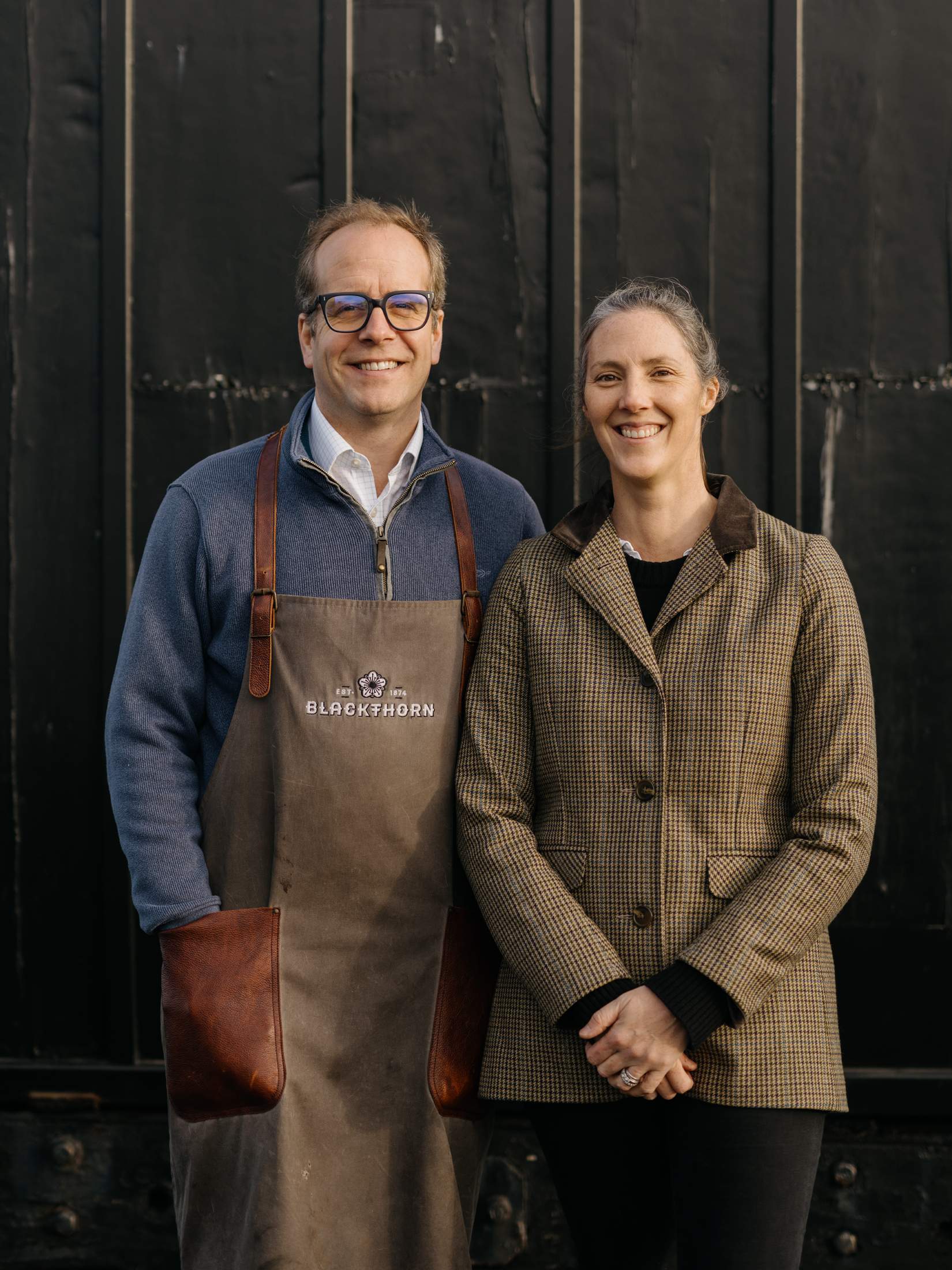


During the process, water seeps along every thorn and is evaporated by West Coast winds. At the final production stage, some gentle heat is applied to form the salt crystals. The resulting product has become a favourite among everyone from chefs to bakers and high-end department stores such as Harrods.
The way that the Marshalls work reflects the values driving many Scottish businesses: close-knit supply chains (the blackthorn is grown nearby) and a focus on quality rather than rapid growth. “The real driver is longevity,” says Whirly. “This is a family business so we’re answering to ourselves, not to shareholders. We’re always asking ourselves if this is a product we’re proud of.”
blackthornsalt.co.uk
Jay Surfboards
Midlothian

In Midlothian, a short drive south of Edinburgh, Jason Burnett can be found hand-shaping and repairing surfboards in his workshop. After he first got hooked on surfing 30 years ago, Burnett started experimenting with repairing his own boards. His friends asked for help fixing theirs and Burnett soon began handcrafting custom designs before founding Jay Surfboards nine years ago. “No one ever starts out thinking they’ll make surfboards,” says Burnett. “It just happens out of curiosity.”
In his workshop, Burnett utilises wet resin. He designs, shapes and “glasses” (the process of applying and sealing fibreglass) foam boards. If he’s handcrafting for a bespoke order, his customers are invited in for a personal consultation to adapt the design to their bodies, preferences and surfing abilities.


Most of Burnett’s patrons are based in Scotland, admittedly not the first surfing haven that might spring to mind but, according to Burnett, the community is growing. “When you start surfing, it’s all you want to do,” he says. “I’m always checking the weather to see when is a good time to drive up to the north coast and spend the weekend catching waves.”
jaysurfboards.co.uk
More Scottish one-offs
The CalMac fry-up
Morning glory
If the Scottish ferry lines are the arteries between the mainland and the islands then the fry-up offered by principal operating firm David MacBrayne might just be the calorific keel-over. We joke. Although the ferries themselves can be a frustration, the galleys serve up a truly hearty Scottish rite of passage.
calmac.co.uk
The Western Isles under sail
Push the boat out
While we’re all at sea, a trip under sail around the west coast’s Small Isles – Eigg, Muck, Rum and Canna – is an unforgettable experience in forming an intimate acquaintance with the crags, inlets and area’s wildlife. The good ship Eda Frandsen is a one-yacht-stop for civilised cruising.
eda-frandsen.co.uk
North Coast 500
Slow rider
Scotland also lends itself to a roadtrip. The mother of them all is the 500: a 516-mile (830km) circuit that starts and ends at Inverness Castle. You won’t be the only one ticking off the sights, so go slow, turn back, explore. As a starting-point, however, it’s far from a chequered flag.
northcoast500.com
Passing places
Code of the road
The smaller the road and the narrower the lane the more the exquisite nature of Scottish driving etiquette is revealed. Two of you on a single track? They’ll reverse up and pull in, no bother. Next time, it’s your turn. The wave of thanks, full eye contact and smile of gratitude is as pleasing as a secret handshake.
Right to roam
This land is your land
Scotland’s unique relationship with its “outdoors” can’t be enshrined in any one doctrine. But 2003’s Land Reform Act, while sounding unsexy, codified anyone’s right of access across almost all of Scotland – with exceptions, of course. But, in the main, it is a noble thing. So get your boots on and don’t look back.
Power of Scotland
Further exploration

If Scotland had a pound for every superlative its landscape alone had earned over the years, those castles would be made from gold, the lochs heated pools with Tiki bars that lairds might lazily swim to. The world loves Scotland but can often unthinkingly dress it in a straitjacket of cliché and presumption that can steal more than it offers. So how to make a sensible survey of Scotland?
There was a point during some of the conversations we had about making this survey, and in the visits we paid in its reporting, that concerned the idea of “coming home”. It had been said that many Scots had gone away and were keen to return to start a business, to
"Scotland feels grand, expansive and open in every sense. It is a wonderful place"
convert that barn into rooms and dream of welcoming guests. We happened upon a few such people within these pages – those who are new to the calling but good at it and keen to learn. We hope that their enthusiasm has caught your imagination.
Even a short, sharp survey of such a rich and varied place as Scotland should offer the germ of an adventurous idea, maybe starting the engine or helping you tie the walking boots with the notion of setting off in earnest soon. If we’ve made you hungry for those horizons, those roads winding through valleys, then we’ve succeeded. But as we hinted at the beginning, Scotland isn’t quite as huge as it looks from its landscape, yet it does feel grand, expansive and open in every sense. It is a wonderful place. We sincerely hope that you find your own version.


